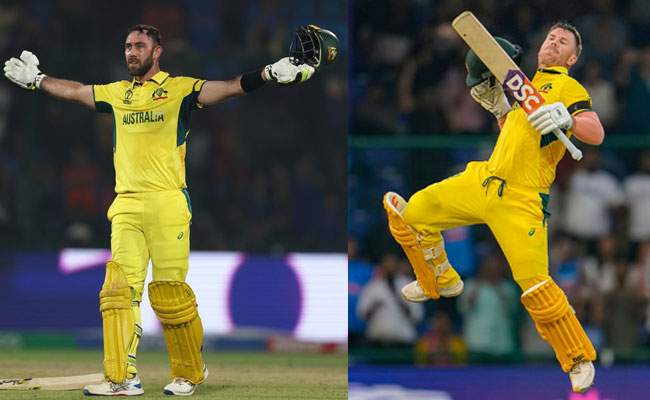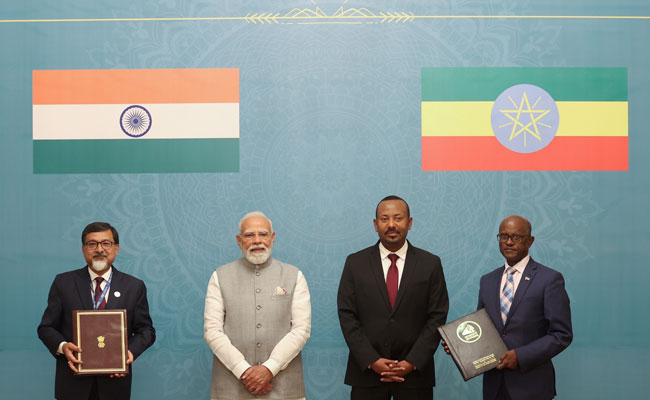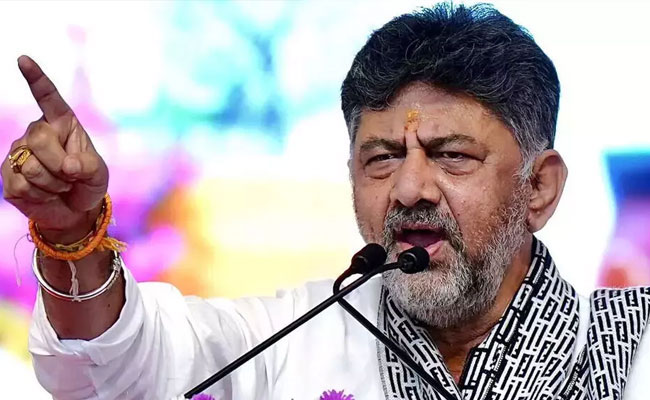New Delhi (PTI): Glenn Maxwell waltzed his way to the fastest World Cup century after David Warner hit his second successive hundred as Australia crushed the Netherlands by 309 runs -- the biggest in tournament history -- to continue their winning run here on Wednesday.
The winning run margin was also the second biggest in ODI cricket after India's 317-run victory over Sri Lanka earlier this year.
Australia bettered their own 275-run win over Afghanistan in the 2015 World Cup at home to notch up the biggest run-margin win in the showpiece's history.
After opener Warner laid the foundation with a 92-ball 104, Maxwell went on a six-hitting spree, hammering 106 off 44 balls, as Australia displayed their batting might to amass a mammoth 399 for 8 after opting to bat.
Steve Smith (71) and Marnus Labuschagne (62) also returned to form with resolute fifties but it was Maxwell who stole the show in the end.
Maxwell reached the hundred in 40 balls to surpass South African Aiden Markram's 49-ball ton which also came at the same venue during this World Cup against Sri Lanka. He hit nine fours and eight sixes during his stunning innings, which was also the fourth fastest hundred in ODI cricket.
With a mountain to climb, the Netherlands folded for 90 in 21 overs with Vikramjit Singh top-scoring with a run-a-ball 25 at the top.
It was Australia's third win on the trot, consolidating their position in the top four with six points with New Zealand and England in line in their next matches.
For the Netherlands, it was their fourth loss, leaving them at the bottom position in the 10-team event.
Warner, who captains the Delhi Capitals in IPL, used his cut shot to good use and was also quick between the wickets as his innings was studded with 11 hits to the fence and three maximums.
He was involved in two big partnerships -- 132 with Smith and 84 with Labuschagne -- as Australia kept a steady run rate, keeping it above six run per over throughout the innings.
The Dutch might have nurtured hopes of a fight back briefly as Australia lost three wickets in 19 balls to slip from 244 for 2 to 267 for 5 but Maxwell forged a 103-run stand off 43 balls with Pat Cummins (12 not out) to take Australia just one run short of 400.
Maxwell's blitzkrieg saw Australia accumulate 131 in the last 10 overs as he used his array of shots, including the reverse sweeps and switch-hits, to completely shatter the Dutch bowling.
The spin all-rounder raced to fifty in 26 balls before completing his hundred in the next 13 deliveries as the 48th and 49th overs produced 21 runs and 28 runs respectively.
His carnage left Dutch all-rounder Bas de Leede scarred as he ended up conceding 115 runs to go with his two wickets in his quota of 10 overs, the most expensive ODI spell in history.
Logan van Beek (4/74) was the highest wicket-taker for the Netherlands.
Chasing 400, the Netherlands races to 27 in the three overs before Mitchell Starc cleaned up Max ODowd for his 56th wicket in ODI World Cups, levelling Sri Lanka's Lasith Malinga in joint third position.
Maxwell then produced a direct hit to remove Vikramjit Singh, while Josh Hazlewood and Pat Cummins also chipped in as wickets kept tumbling too quickly.
An air-borne Warner got rid of Sybrand Engelbrecht with a stunning catch off Mitchell Marsh, who also accounted for Teja Nidamanuru. Adam Zampa then picked up his third successive four-wicket haul.
Earlier, in a bold decision, the Netherlands introduced twin spin attack but Warner took Aryan Dutt to the cleaners with four successive fours on the off side.
Logan van Beek struck the first blow with a short ball to get rid of Mitchell Marsh (9) but Smith, who has been struggling so far, stepped up. He pulled and drove Paul van Meekeren for two fours before picking three successive boundaries off van Beek as Australia scored 66 for one in first powerplay.
After surviving a run-out chance, Warner clobbered the first six of the innings over deep midwicket. He then deposited Vikramjit over long on to bring up the team hundred and reached his fifty with a four next, before hitting another boundary.
Smith too picked up his first fifty as 124 came up in 20 overs.
Warner got another life when Roelof van der Merwe grassed a catch. Aryan finally broke the stand with van der Merwe holding on this time to dismiss Smith. It put a break on the Australian as 22 runs came from 23rd to 28th overs.
Labuschagne kept Australia ticking, with his innings of seven fours and two sixes. He was dismissed by de Leede, who also got rid of Josh Inglis (14).
After Warner was holed out to Aryan off van Beek after completing his century and Cameron Green was run out next, it seemed the Dutchmen will drag back the Australians.
But Maxwell had other ideas as he sent the Dutchmen on a leather hunt with a sensational blitzkrieg.
Let the Truth be known. If you read VB and like VB, please be a VB Supporter and Help us deliver the Truth to one and all.
Addis Ababa (PTI): India and Ethiopia on Tuesday elevated their historical ties to a strategic partnership, as Prime Minister Narendra Modi held wide-ranging talks with his Ethiopian counterpart Abiy Ahmed Ali during which they discussed issues of bilateral and mutual interest.
Modi, who arrived here from Jordan on his maiden bilateral visit, was accorded a ceremonial welcome at the National Palace ahead of the bilateral talks, reflecting the vibrant India-Ethiopia relations rooted in shared history and a promising future.
"We are elevating India and Ethiopia relations to a strategic partnership. This step will provide new energy, new momentum and new depth to our ties," Prime Minister Modi said during the delegation-level talks.
He thanked PM Ali for his support in India's fight against terrorism. "The support of friendly countries in this struggle against terrorism holds great significance," Modi said.
"Today, we got the opportunity to deliberate on the key aspects of our cooperation, such as economy, innovation, technology, defence, health, capacity-building and multilateral cooperation. I am pleased that today, we have decided to double the student scholarship for Ethiopia in India," Modi said.
Modi said that India and Ethiopia have shared contact, dialogue, and exchange for thousands of years. The two countries, which are rich in languages and traditions, are symbols of unity in diversity, he added.
"Both countries are democratic powers committed to peace and the welfare of humanity. We are co-travellers and partners of the Global South. On international platforms, we have stood shoulder-to-shoulder," he said.
The two sides signed eight MoUs/agreements, including upgrading ties to 'Strategic Partnership', customs cooperation, establishing data center at the Ethiopian Foreign Ministry, UN Peacekeeping training cooperation, debt restructuring under G20, more ICCR scholarships and AI short courses for Ethiopians, and support for maternal and neonatal healthcare.
Modi said the African Union's headquarters in Ethiopia makes the country a meeting point of African diplomacy. "Inspired by the common vision of an inclusive world, in 2023, India ensured that the African Union became a G20 member," he said.
In 2023, during India’s G20 Presidency, the African Union was admitted as a permanent member of the G20.
Modi said that though this is his first visit, he felt a deep sense of belonging and warmth, reflecting the thousands of years of connection between the two countries.
On his part, Prime Minister Ali said the two countries share over thousands of years of connection through trade, diplomacy, education, culture and even in our food and traditions. "These ties continue to shape a deep friendship, collaboration and mutual respect between our people," he said.
"We also appreciate your consistent message that Africa's priorities must lead the partnership. These kinds of dignified, respectful messages for Africa are very important. Mr Prime Minister, keep pushing. That is the type of message we are expecting from all our trusted friends," Ali said.
He said this aligned fully with Ethiopia's development plan - African-owned, African-led, and African-defined.
"Today, we meet with a clear focus to shape a modern partnership, grounded in sovereignty, self-reliance and practical cooperation. Our cooperation is rooted in equality and South-South solidarity," he said.
"Our economy is performing strongly. Last year, we grew 9.2% and this year we are expecting 10.3% GDP growth. Besides GDP growth, our FDI inflow is also rising big time. India is the leading source for our FDI," he said.
"We have more than 615 Indian companies which are investing in Ethiopia. This all gives our cooperation a strong foundation of trust. I think our decision today that we elevate our historic relationship to a strategic relationship is the right decision," he added.
Ethiopia also conferred its highest award - The Great Honour Nishan of Ethiopia - on PM Modi. He is the first global head of state to receive this award.
Prime Minister Modi also went to the Friendship Park and Friendship Square in Addis Ababa with PM Ali.
In a warm and special gesture, PM Modi was earlier received by his Ethiopian counterpart at the airport and accorded a warm and colourful welcome.
"Ethiopia is a nation with great history and vibrant culture," Modi said.
PM Ali informed his Indian counterpart about the varieties of Ethiopian coffee during informal talks.
"At Addis Ababa airport, took part in a traditional Coffee Ceremony with Prime Minister Abiy Ahmed Ali. The ceremony beautifully highlights Ethiopia’s rich heritage," Modi said.
In a unique gesture, the Ethiopian Prime Minister drove Modi to the hotel.
On the way, he took a special initiative of taking PM Modi to the Science Museum and Friendship Park, which was not in the itinerary.
"Gratitude to Prime Minister Abiy Ahmed Ali for showing me glimpses of Ethiopian history and culture at the National Palace Museum in Addis Ababa. It was a powerful reminder of Ethiopia’s rich traditions," Modi said in a post on X.
The Nobel Peace Prize-winning Ethiopian PM’s special gestures show remarkable respect for Modi, sources said.
"Thank you Ethiopia for a welcome that was unforgettable. The Indian community showed remarkable warmth and affection. India-Ethiopia friendship is going to get even more robust in the times to come," Modi said.
When Modi arrived at the hotel, he was warmly welcomed by the members of the Indian community. Local artists performed dances. Some of them danced on the theme of the popular Hindi song 'Aisa Des Hai Mera' to welcome him.
On Wednesday, Modi will address the Joint Session of Parliament and share his thoughts on India's journey as the "Mother of Democracy" and the value that the India-Ethiopia partnership can bring to the Global South.
PM Modi arrived in Ethiopia from Jordan, where he held a one-on-one meeting with King Abdullah II at the Husseiniya Palace on Monday before the delegation-level talks.
India and Jordan also inked MoUs in the fields of culture, renewable energy, water management, digital public infrastructure and twinning arrangement between Petra and Ellora, aimed at giving a major boost to bilateral ties and friendship.
From Ethiopia, Modi will visit Oman on the final leg of this three-nation tour.





